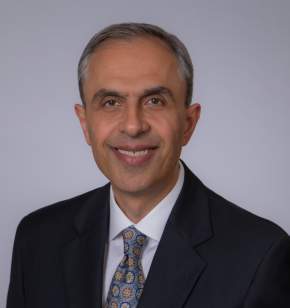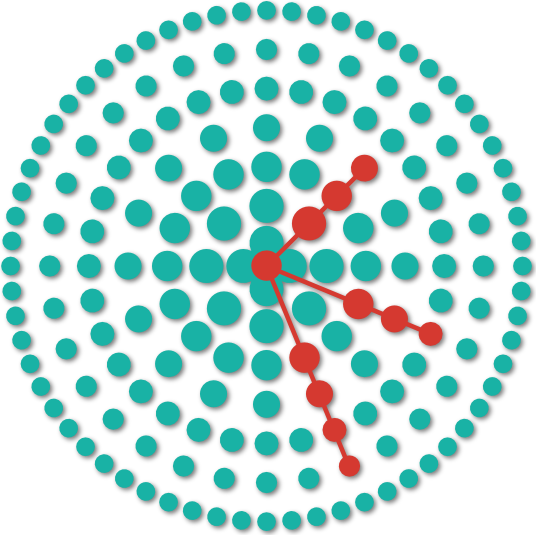Observation: Monitoring Tumor Growth in Acoustic Neuroma Patients


Acoustic neuromas, otherwise known as vestibular schwannomas, may be asymptomatic for months or years following initial diagnosis. In fact, many cases of acoustic neuroma are found early on due to today's advanced diagnostic techniques done for reasons other than a suspected brain tumor. As a result, acoustic neuromas are frequently discovered when they are too small to cause anything more than mild symptoms — or they may be completely asymptomatic.
In these cases, depending upon the size of the tumor, your age, health, or other factors, your neurosurgeon may recommend medical observation as your primary tumor management plan. To find out more about the pros and cons of undergoing observation instead of direct treatment for your acoustic neuroma, read the information below.
Observation as the Primary Management Plan for Acoustic Neuroma
Observation with periodic monitoring via imaging for an acoustic neuroma, otherwise known as the "watch-and-wait" approach, has become more common now that acoustic neuromas have been diagnosed more often at an early stage. When a doctor feels that observation is the best management plan for an acoustic neuroma, there may be several viable reasons:
Age
First, the patient’s age may place the patient at risk of complications from surgery for an acoustic neuroma. If the patient is very elderly, the doctor may believe that he or she is too frail to handle the side effects of more aggressive treatments such as surgery.
Why should you have your surgery with Dr. Cohen?
Dr. Cohen
- 7,500+ specialized surgeries performed by your chosen surgeon
- More personalized care
- Extensive experience = higher success rate and quicker recovery times
Major Health Centers
- No control over choosing the surgeon caring for you
- One-size-fits-all care
- Less specialization
For more reasons, please click here.
The “Watch-And-Wait” Approach for Managing Asymptomatic Tumors
If your tumor is very small and causes few or no symptoms, your doctor may select the "watch-and-wait" approach as your primary tumor management plan. Some acoustic neuromas are very small and do not show symptoms for months or even years.
When symptoms eventually do arise and/or if the tumor begins to grow at a rate where it is no longer feasible to continue with solely monitoring the tumor, your surgeon will choose a treatment: surgery or radiation therapy.
Concerns for Reduced Quality of Life
The goal of direct treatment for acoustic neuroma is to remove the tumor and relieve the patient’s symptoms. In the case of surgery, it is to remove as much of the tumor as safely possible, hopefully preventing future growth and relieving pressure from nearby nerves.
However, each type of treatment comes with its own risks and potential complications. For example, depending upon the amount of hearing loss the patient has before surgery and the surgical approach that is used to remove the tumor, surgical treatment may result in complete and permanent hearing loss. When presented with the risk of total hearing loss from surgery, the patient may opt for observation instead, if this is a medically reasonable option.
In addition, patients who have already been treated through one or more direct treatment methods (surgery or radiation) may still have some residual tumor present. They may decide to watch and wait through observation before starting another round of direct treatments. In addition, some patients without symptoms may choose observation indefinitely unless the tumor grows or causes new symptoms.
Inability to Tolerate Surgery
Finally, if the patient is ill, frail, or elderly, the neurosurgeon may decide that surgery and other aggressive treatments are too risky. In that case, the neurosurgeon will recommend observation as the best way of managing the patient's acoustic neuroma.
Follow-up Appointments With Imaging
When a patient and surgeon decide on the "watch-and-wait" approach as their primary approach to managing an acoustic neuroma, the patient will usually be required to return for a follow-up visit every six to 12 months.
After five years or so of annual follow-ups, the doctor will usually reduce follow-up appointments to once every two or three years as long as the tumor has not grown. The amount of time in between follow-up visits depends upon the stability of the tumor on previous visits, health of the patient, the tumor's growth rate, the extent of symptoms the patient has, and other factors.
At the follow-up appointment, the patient will have an MRI (magnetic resonance imaging) scan. The neurosurgeon will then review the imaging, shares the findings, and decides whether it is time to start a direct treatment plan.
Drawbacks on the Watch-And-Wait Method of Acoustic Neuroma Management
Observation of acoustic neuroma may postpone or take the place of direct treatment — but in many cases the decision to undergo surgery and/or radiation therapy eventually must be made. Watching and waiting under careful observation may cause the patient a lot of stress, particularly when it is time for the follow-up appointment.
There is also a calculated risk involved when the patient submits to an observation period. The tumor could significantly grow between follow-up appointments making direct treatment more challenging. Importantly, it is rare to have dramatic growth between scans completed annually.
Key Takeaways
- Observing or the "watch-and-wait" approach for an acoustic neuroma is a viable tumor management plan when the patient is not a good candidate for surgery or other direct treatments or if the patient wishes to enjoy a certain quality of life without side effects or complications caused by more direct treatment options.
- Because most acoustic neuromas are benign and slow-growing, they may be small, may not cause noticeable symptoms, or may only cause very mild symptoms when diagnosed.
- Careful "watch-and-wait" approach requires the patient to undergo an MRI periodically, most commonly every year so that he or she can enjoy a good quality of life for years while no major symptoms exist and no direct treatment is necessary.
- This watch-and-wait approach is not without its drawbacks. The observation period and follow-up imaging appointments have been known to cause high stress for the patient once the time of the follow-up appointment has arrived. Likewise, sudden significant tumor growth is possible but rare and may make direct treatment more challenging.
If you are diagnosed with acoustic neuroma, be sure to talk candidly with your doctor about whether you will benefit from long-term observation as your primary tumor management plan.











